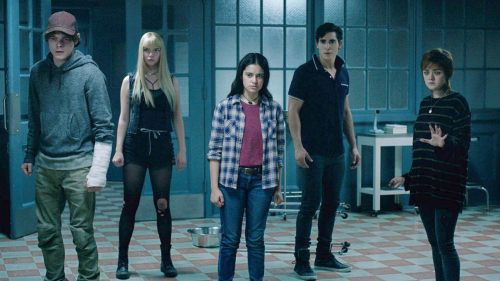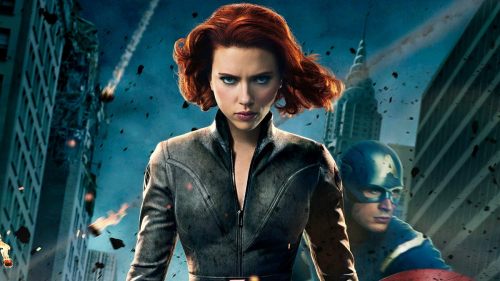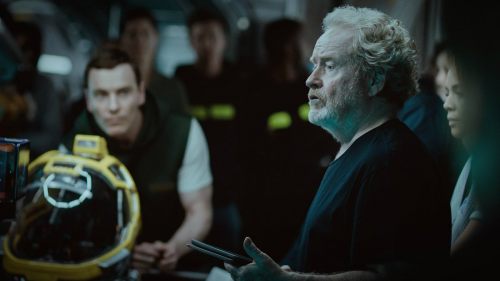WRECK-IT-RALPH 2: How Ralph Fakes The Internet
It’s nearly Halloween, which means I’ve spent too much time thinking about costume options. These have included obvious ideas (Joe in You Were Never Really Here) and things way out of my practical creative range (the aliens in Arrival). The same questions apply to both: what are the crucial details that would tell people what the costume was meant to be at a single glance? How do you make the recreation feel right without having to replicate every single bit?
So let’s say you’re a Disney animator, and you want to create a facsimile of the internet. We’ve seen the information superhighway rendered in movies in many different ways — queue a delightful cinematic memory lane full of rays of light, walls of numbers, and neon corridors of information — but what worked (or “worked”) for Johnny Mnemonic wouldn’t be quite right for the family-friendly Ralph Breaks the Internet.
The production, led by directors Rich Moore and Phil Johnston and art director Matthias Lechner, started out with very broad concepts, but soon landed on some important ideas. One of the main ideas behind the Wreck-It-Ralph sequel was a fish out of water concept. As residents of a local arcade, Ralph and Vanellope are basically small-town kids who go to the big city of the Internet. There, they are delighted by, and fall foul of, the same things we do. That is, what Johnston called “the pillars of the internet: social media, shopping, entertainment, online gaming.”
So the film’s internet is a dense urban center with layers of modular buildings, garish signs, walkways and roads, all of which, like a Metropolis nightmare, stretches to the horizon. Early ideas about using parody brands, as seen in concept art dating back to 2016, were scuttled in favor of using actual companies that act as cornerstones of the internet, such as Google, Amazon, and eBay. At Disney’s early press day for the film, we were told more than once that Disney was able to use names and logos without licensing. As if Disney would give Amazon money for anything at this point.
Residents, which the production calls Netizens, are color-coded, cartoonish figures who do all the grunt work of the internet, from completing commercial transactions to pushing spam on users and cleaning up trash around the place. They swarm around block-headed Net Users who represent… us, basically. Which is to say they behave simplistically, driven by basic desires.
The company has sent research teams to create visual documentation of locations for films in the past. That’s easy on movies like Moana and Zootopia, which are based on real geographic locations. The internet is all too real, as we are reminded on a daily basis, but you can’t really jump on a plane to go take photos for visual reference. The Disney Animation team did go to the building that acts as one of the major internet hubs for the United States: the One Wilshire data center which is basically a box full of servers and wires that routs digital traffic for a massive chunk of the continent. But that provided only a layer of ideas.
Several years ago when the team began working on the movie, Moore & Co. solicited ideas about the internet from employees throughout Disney Animation. They got a lot of cat videos, naturally, and also comments like “you gotta have Ken Bone!” That was a good pointer to what not to do. Ken Bone was an internet darling for a few dozen hours, and now he’s effectively irrelevant. The idea of evergreen appeal became a key marker to indicate “this is the internet,” and so cat videos did make the cut.
And the idea of Ken Bone turned into a story ingredient oriented around viral fame and the negative downsides of becoming an overnight sensation. Going viral has been part of the story of Ralph Breaks the Internet through several widely different drafts. Vanellope was going to be the viral star at one point, then Ralph was set to be the one who gets famous — but that fame was once going to have a very different effect on the big guy.
(The primary fictionalized company in the movie is “BuzzTube,” which plays into Ralph’s experiences with internet fame. It’s also the home of Yesss, the character voiced by Taraji P. Henson, who acts as a tastemaker for every trend and concept in this version of the internet.)
Ralph’s experience with fame isn’t all good. One of the ways the film’s online experience gets real is with the reaction to his viral presence. (Hint: it goes sour quick.)
Along those lines, the directors knew they had to represent the downsides of the internet, even if there’s no Ralph Breaks the Internet version of 4Chan or The Daily Stormer. “The internet has become more hostile,” Moore says. “We felt like we can’t do a movie about the internet and paint it as all roses and sunshine. We have to give due to the darker side of it.”
One obvious result is the movie’s use of the “dark web,” which isn’t so much about getting illegal drugs as it is “archives, software, things behind paywalls, stuff you can’t just reach from your browser.” But, Lechner says, that dark web is “the seedy underbelly of the internet. This is where the users are all anonymous, where you can meet a lot of tricksters and viruses.”
And, just as in the real world, the internet just… keeps… going. There’s no winning. “Ralph can encounter these things and embody them and fall prey to them,” Moore says, “but ultimately what we want is him not to solve it.” An ending like that “would be disingenuous,” he says. “The last thing we want to do is lecture the audience, but we can show a character who encounters what we encounter on the internet, and how he goes about rising above it.” He could have just told Ralph not to read the comments.



